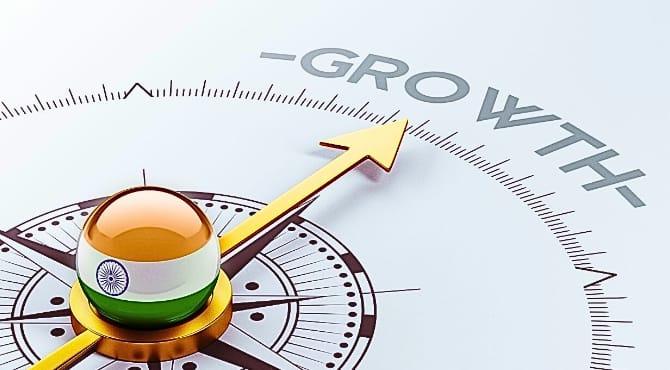The Indian economy is changing its shape with the services sector leading the way. As per the 2025 NITI Aayog report titled “India’s Services Sector Insights from GVA Trends and State-Level Dynamics,” the services sector has become the largest contributor to India’s Gross Value Added (GVA) with more than 54.5% contribution, thus positioning it as the most vibrant and viable growth source.
This data-driven narrative report helps to visualize the services sector acting as the main growth driver in India while underlining the states’ unevenness in development. This opens up new opportunities for the promotion of a more inclusive and balanced regional growth throughout the march to the Viksit Bharat 2047 vision.
Services sector: The growth story
India has been successful in transitioning towards a service-based economy in a way, which is different from the conventional economic development models, where agriculture and industry are seen as growth engines before the rise of services.
Over the period of 2011-2024, the services sector has been progressively increasing its share of GVA from roughly 50% to 54%+, the share of the primary sector dropped and that of the secondary sector (manufacturing) hardly changed and stayed around 28 to 29%. The growth of these four major sub-sectors (Information Technology {IT}, financial services, professional services, and real estate) is the one that has been the main driver of the global exports and employment of India.
NITI Aayog exposed the existence of two interdependent components within the Indian services sector, namely, a high productivity and tradable one that is centric to IT, finance, and business services and a traditional, labor-intensive, and low-productivity one-consisting of retail trade, hospitality, and transportation, which is still very important for employment but faces the problem of low productivity. This complex also offers options for specific policy measures aimed at increasing productivity and the level of formalization in these areas.
Regional dynamics and divergence
The document demonstrates wide disparities between regions in terms of the services economy’s structure and size. For instance, states like Karnataka, Maharashtra, Tamil Nadu, and Telangana are at the forefront of the transformation towards modern, high-productivity service hubs, which are mostly urban centers with a skilled workforce and advanced digital infrastructure.
Together, these states produce almost 40% of the total services output of India. On the contrary, a majority of the states in the east and the north are dependent on traditional, informal service activities that limit their income growth and regional development.
One of the most promising facts for the eastern and northern states is that, according to the report’s convergence analysis, they appear to be fast-tracking their service sector growth than that of advanced states and so are catching up with the latter although the gap between them is still quite considerable. This slow convergence process, facilitated by the progress made in infrastructure and skill-building, reflects the prospect of more regionally balanced and area-inclusive growth.
Policy roadmap: Differentiated and targeted
The report by NITI Aayog identifies future, policy-relevant service sub-sector classes on the basis of their expansion and contribution to the GVA. These classes include “Engines of Growth,” “Emerging Stars,” “Mature Giants,” and “Struggling Segments.” By using this model, the government can take stepwise and selective actions to stimulate digital infrastructure in fast-growing sectors such as IT and professional services, bring in the digital technology to traditional services for their revival, and renew the underperforming subsectors such as insurance and postal services.
Reforms at the state level are mainly focused on a phased strategy that comprises infrastructure building, deepening services in local industrial ecosystems, upgrading workforce skills, and increasing decentralized service delivery capacity. Personalized plans take into account the particular economic situation of every state and represent infrastructure unlocking, digital empowerment, innovation, and market access ways to help the states harness and diversify their service economies.
Through deep and exhaustive analysis, NITI Aayog asserts India’s services sector not only as a significant GDP growth driver but also as a major force reshaping regional economies, employment, and global integration. The increased spearheading role of the sector underlines India’s distinctive growth model—the leapfrog transition to a digital and services-led economy.
However, the report also warns that the realization of the full potential of services for inclusive and sustainable development is contingent upon the adoption of strategic policies that take into account regional heterogeneity, encourage productivity gains, and facilitate the emergence of new sectors. As India speeds towards Viksit Bharat 2047, the services sector is still a source of opportunities for long-term resilience and equitable growth. The inputs and detailed plan outlined by NITI Aayog constitute an indispensable guide to policymakers and stakeholders who are working toward building a globally competitive, regionally inclusive, and future-ready economy.









